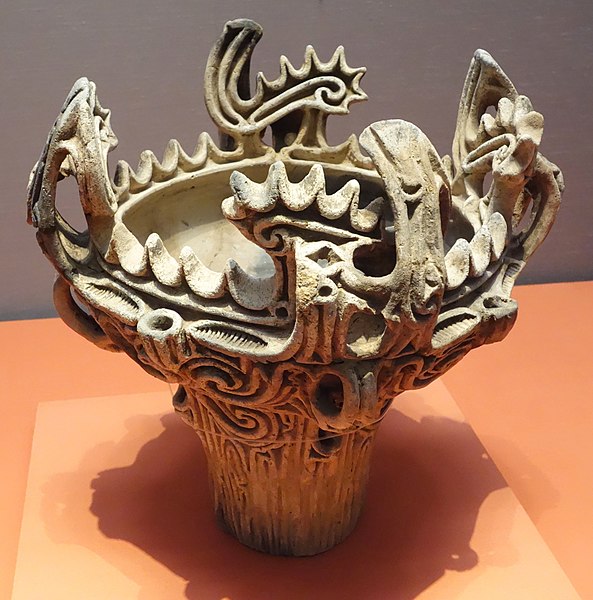
Flamboyant Jomon Pot
Tokyo National Museum
3000-2000 BC
Pottery like this raises profound questions about cultural identity and difference in early Japan. Its baroque decoration contrasts wildly to the Yayoi aesthetic, of elegant simplicity, that has dominated Japan ever since. Named after the flame-like decoration of its rim, Flamboyant Jomon pottery is usually dated to the Middle Jomon period (2500-1500 BC, pace the Tokyo Museum's date). As the most spectacular and least practical of Japan's early pottery styles, it must have been designed for ritual and funeral, not everyday use. The pot shown here is an extreme example, that evolved from much simpler innovations that were produced earlier in the period.


